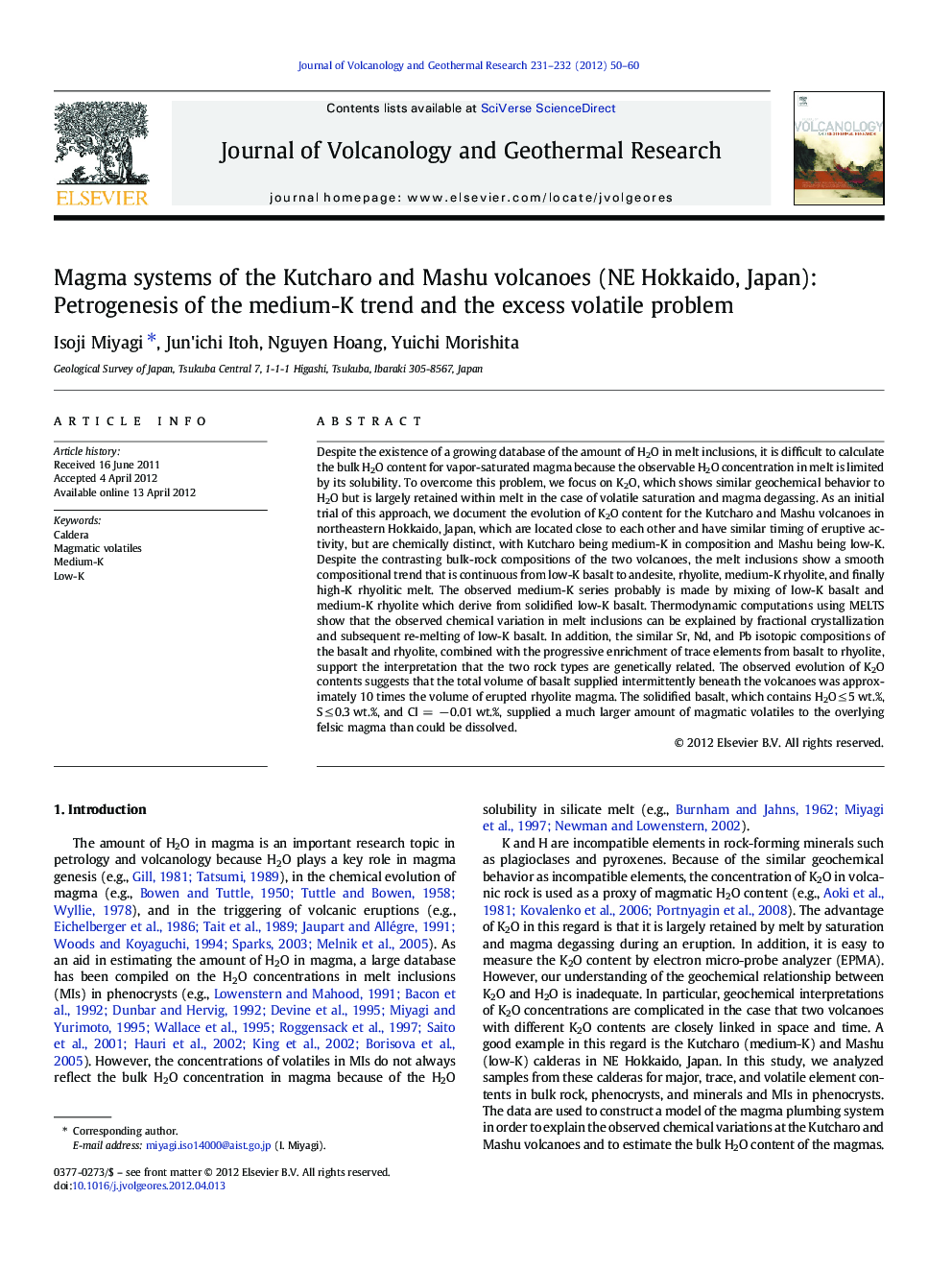| Article ID | Journal | Published Year | Pages | File Type |
|---|---|---|---|---|
| 4712679 | Journal of Volcanology and Geothermal Research | 2012 | 11 Pages |
Despite the existence of a growing database of the amount of H2O in melt inclusions, it is difficult to calculate the bulk H2O content for vapor-saturated magma because the observable H2O concentration in melt is limited by its solubility. To overcome this problem, we focus on K2O, which shows similar geochemical behavior to H2O but is largely retained within melt in the case of volatile saturation and magma degassing. As an initial trial of this approach, we document the evolution of K2O content for the Kutcharo and Mashu volcanoes in northeastern Hokkaido, Japan, which are located close to each other and have similar timing of eruptive activity, but are chemically distinct, with Kutcharo being medium-K in composition and Mashu being low-K. Despite the contrasting bulk-rock compositions of the two volcanoes, the melt inclusions show a smooth compositional trend that is continuous from low-K basalt to andesite, rhyolite, medium-K rhyolite, and finally high-K rhyolitic melt. The observed medium-K series probably is made by mixing of low-K basalt and medium-K rhyolite which derive from solidified low-K basalt. Thermodynamic computations using MELTS show that the observed chemical variation in melt inclusions can be explained by fractional crystallization and subsequent re-melting of low-K basalt. In addition, the similar Sr, Nd, and Pb isotopic compositions of the basalt and rhyolite, combined with the progressive enrichment of trace elements from basalt to rhyolite, support the interpretation that the two rock types are genetically related. The observed evolution of K2O contents suggests that the total volume of basalt supplied intermittently beneath the volcanoes was approximately 10 times the volume of erupted rhyolite magma. The solidified basalt, which contains H2O ≤ 5 wt.%, S ≤ 0.3 wt.%, and Cl = − 0.01 wt.%, supplied a much larger amount of magmatic volatiles to the overlying felsic magma than could be dissolved.
► We estimate total H2O supply into rhyolite magma chamber from solidified basalt. ► We examine chemistry of two volcanoes with distinct K2O but close in time and space. ► The distinction in bulk chemistry was not observed in melt. ► The distinction will be made by mixing low-K basalt and the derived rhyolite. ► The solidified basalt will supply tenfold excessive H2O into rhyolite magma chamber.
